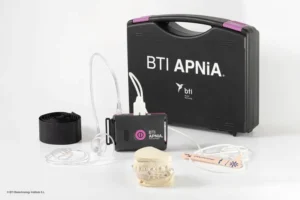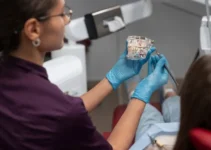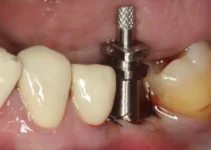Navigating the world of CPAP therapy can be overwhelming, especially when it comes to understanding the essential supplies needed for effective treatment. CPAP supplies, including masks, hoses, filters, and humidifiers, play crucial roles in ensuring that your CPAP machine functions optimally, providing you with relief from sleep apnea. Regular maintenance and timely replacement of these components are vital to maintain air quality and comfort throughout your therapy. This article delves into the various types of CPAP supplies, their functions, and tips on how to care for them to enhance your sleep therapy experience.
Essential CPAP Supplies
Continuous Positive Airway Pressure (CPAP) therapy is an effective treatment for obstructive sleep apnea, a condition where the airway becomes blocked during sleep, leading to pauses in breathing. CPAP therapy entails the use of a machine that supplies a continuous stream of air, keeping the airway open. For CPAP therapy to be effective, a few essential supplies are necessary, including CPAP machines, CPAP masks, and CPAP tubing. Understanding these components can help users achieve optimal treatment outcomes.
The efficacy of CPAP therapy is largely dependent on the quality and proper use of these supplies. Keeping them in good condition through regular maintenance and timely replacements is also crucial. The availability of newer and more ergonomic devices, such as the APNiA system, further emphasizes the importance of leveraging advanced technologies for better diagnosis and treatment. Let’s delve into the specifics of each essential CPAP supply.
CPAP Machines
CPAP machines are the core component of CPAP therapy, providing a consistent flow of air to prevent the airway from collapsing. These machines are designed to be user-friendly and come with various features to enhance comfort and usability. The latest models, like the APNiA electronic device, are smaller, ergonomic, and intuitive, making them easier to use and maintain.
CPAP machines have evolved significantly over the years, incorporating advanced technologies to improve user experience and treatment efficacy. Modern machines can collect multiple channels of information, such as respiratory flow, ventilatory effort, oximetry, heart rate, body position, snoring, and respiratory rate. This data is invaluable for making more accurate diagnoses and tailoring treatments to individual needs.
When choosing a CPAP machine, it’s crucial to consider factors such as noise level, portability, and data tracking capabilities. Consulting with a healthcare provider can help determine the best machine for your specific condition and lifestyle.
CPAP Masks
The CPAP mask is the interface between the CPAP machine and the user. It delivers the pressurized air from the machine to the airway and comes in various styles, including nasal masks, full-face masks, and nasal pillows. The choice of mask is critical for comfort and efficacy. A well-fitted mask ensures a secure seal and prevents air leaks, which can compromise treatment.
Comfort is key when selecting a CPAP mask. Different users may prefer different styles based on their sleeping positions and personal comfort. It’s essential to try various options to find the most comfortable and effective fit. The latest masks are designed to be lightweight and less obtrusive, improving user compliance.
Regular maintenance of the CPAP mask is essential to ensure hygiene and functionality. Masks should be cleaned daily and replaced approximately every six months, or according to the manufacturer’s recommendations.
CPAP Tubing
CPAP tubing, also known as the hose, connects the CPAP machine to the mask. It allows the pressurized air to travel from the machine to the user’s airway. Tubing comes in various lengths and styles, including heated options to prevent condensation and improve comfort. Proper maintenance of CPAP tubing is essential to prevent the buildup of moisture and bacteria. Tubing should be cleaned at least once a week and replaced every three to six months. Ensuring that the tubing is free of any kinks or obstructions is crucial for maintaining efficient airflow.
- Regular inspection for wear and tear
- Cleaning with mild soap and water
- Ensuring compatibility with the CPAP machine and mask
Advancements in CPAP technology, such as those seen in the APNiA system, have made significant strides in improving the overall user experience. By understanding and properly maintaining these essential CPAP supplies, users can achieve better treatment outcomes and enhance their quality of life. For more insights into CPAP therapy and sleep apnea treatment, consider reading our other articles on this vital health topic.
Cleaning and Maintenance
Daily Cleaning Supplies
Proper cleaning and maintenance of your APN iA Electronic Device are crucial to ensure its longevity and accuracy. Daily cleaning supplies should be kept handy and used regularly to maintain the device in optimal condition. Depending on the manufacturer’s guidelines, you may need a range of supplies such as alcohol wipes, soft cloths, and gentle cleaning solutions. Using these supplies routinely will help in removing any debris, dust, and bodily fluids that may accumulate on the device.
One essential item for daily upkeep is the alcohol wipe. These are effective in sanitizing the electronic components without causing damage. They are particularly useful for cleaning high-contact areas like the nasal cannula and oximetry sensor. Soft cloths should be used to clean the device’s body to avoid scratching its surface.
Additionally, incorporating a gentle cleaning solution that’s recommended by the manufacturer can help you maintain the device’s sensitivity and functionality. This ensures the device continues to collect accurate data, such as respiratory flow and heart rate, crucial for effective diagnosis. Here are some daily supplies you might need:
- Alcohol wipes
- Soft cloths
- Manufacturer-recommended cleaning solutions
Weekly Maintenance Tools
Apart from daily cleaning, the APN iA Electronic Device requires weekly maintenance to function correctly over time. Weekly maintenance tools are geared towards deeper cleaning and inspection. It is recommended to have a toolkit that may include small brushes, compressed air canisters, and a magnifying glass for inspecting fine details. These tools help in reaching areas that are not accessible during daily cleaning.
A small soft-bristled brush can be particularly useful for cleaning crevices and connection points. This helps in maintaining the integrity of the device by ensuring that no dust or debris affects the electronic connections. Using compressed air canisters can effectively clear out any particles from tight spots without needing to disassemble the device.
Furthermore, a magnifying glass can assist in performing a detailed inspection of critical components like the sensors and connectors. This helps in identifying any wear and tear or potential issues before they escalate into more significant problems. Regular checks and minor adjustments can significantly prolong the device’s life and ensure it continues to deliver reliable data.
Here are some weekly maintenance tools you should consider:
- Soft-bristled brushes
- Compressed air canisters
- Magnifying glass
By adhering to these cleaning and maintenance routines, you can ensure that your APN iA Electronic Device remains in top working condition. For more information on maintaining your medical devices or other health-related topics, check out our other articles.
Comfort Accessories
When it comes to managing sleep apnea, comfort is key. While the primary focus is often on the efficacy of the treatment devices, such as the new APN iA electronic device, it is equally important to consider the accessories that enhance overall comfort. This can significantly improve patient compliance and the overall success of the treatment. Two such accessories are CPAP pillows and mask liners, which are designed to work seamlessly with devices to provide a more comfortable experience.
Comfort accessories are particularly valuable because they address common discomforts associated with sleep apnea treatments. These discomforts can include skin irritation, pressure sores, and disrupted sleep due to ill-fitting equipment. By incorporating accessories like CPAP pillows and mask liners into their routine, patients can experience a much smoother and more restful night’s sleep. Additionally, comfort accessories can make a substantial difference for those new to sleep apnea treatments. They can help in acclimatizing to the new routine and ensuring that the patient does not abandon the treatment prematurely due to discomfort. Let’s delve into the specific benefits of CPAP pillows and mask liners.
CPAP Pillows
CPAP pillows are specially designed to accommodate the shape and size of various CPAP masks, providing a more comfortable and supportive sleep surface. These pillows come with cut-out areas to prevent the mask from being pushed and dislodged as the patient changes sleeping positions, thus maintaining a steady flow of air throughout the night.
One of the primary benefits of CPAP pillows is reducing mask leakage. Standard pillows can press against the mask, causing gaps that let air escape. CPAP pillows minimize this risk, ensuring the treatment remains effective. Patients often report fewer interruptions and a more restful sleep when using these pillows.
CPAP pillows also offer ergonomic support for the head and neck, which can alleviate pressure sores and discomfort. This is particularly useful for side sleepers who often struggle with maintaining a comfortable position with a standard pillow. The unique design of CPAP pillows helps distribute weight evenly, reducing the risk of pressure points and making it easier to maintain a recommended sleeping position.
Studies have shown that the use of CPAP pillows can lead to improved sleep quality and patient compliance. By addressing the physical discomforts associated with CPAP therapy, these pillows make it easier for patients to stick with their treatment plans, ultimately leading to better health outcomes.
Mask Liners
Mask liners are another valuable accessory that can enhance the comfort of sleep apnea treatments. These liners are typically made from soft, breathable fabric that serves as a barrier between the skin and the mask. They help to reduce skin irritation and absorb excess facial oils and moisture, which can lead to a better seal and improved comfort.
A key benefit of mask liners is the prevention of skin irritation. The silicone in CPAP masks can cause redness, rashes, and sores over time, particularly for those with sensitive skin. Mask liners provide a cushioning effect that reduces friction and irritation, making the therapy more tolerable.
Mask liners can also mitigate the issue of air leaks, similar to CPAP pillows. They help create a better seal between the mask and the skin, reducing the chances of air escaping. This not only ensures the effectiveness of the treatment but also minimizes noise, contributing to a more peaceful sleeping environment.
Using mask liners can also improve hygiene. The fabric liners are typically disposable or washable, making it easier to maintain a clean and sanitary mask. This can be particularly beneficial in reducing the risk of infections or skin issues caused by prolonged mask use.
Overall, the combination of CPAP pillows and mask liners can transform the experience of sleep apnea treatment, addressing both comfort and functional issues. By investing in these accessories, patients can enhance their sleep quality and increase their likelihood of adhering to the prescribed treatment.
For more insights into how comfort accessories can improve your sleep apnea therapy, and to learn about the latest advancements in treatment devices, make sure to explore our other articles dedicated to sleep health.
Replacing Your CPAP Supplies
Proper management of your CPAP (Continuous Positive Airway Pressure) supplies is integral to ensuring effective treatment for sleep apnea. Regular replacement of CPAP equipment not only maintains the device’s performance but also ensures the hygiene and safety of the user. This article will guide you on when and how to replace your CPAP supplies, and offer tips on finding replacements.
Taking care of your CPAP supplies might seem like a daunting task, but it is crucial for the long-term success of your treatment. Correct maintenance and timely replacement can significantly impact your sleep quality and overall health. By following expert recommendations and utilizing diagnostic tools, such as the APNiA system, you can ensure the most effective and comfortable treatment experience.
The APNiA system stands out in the market as the only device that not only allows for comprehensive diagnosis but also aids in subsequent treatment. With its intuitive design and ergonomic features, APNiA collects data from seven different channels, including respiratory flow, ventilatory effort, oximetry, heart rate, body position, snoring, and respiratory rate. This data is essential for making informed decisions about your CPAP equipment and treatment plans.
When to Replace CPAP Equipment
Knowing when to replace your CPAP equipment is vital. Each component has a different lifespan and should be replaced according to specific guidelines to ensure optimal functionality and hygiene. For instance:
- CPAP masks and headgear – Typically need replacement every 3 to 6 months.
- CPAP filters – Should be checked monthly and replaced every 3 months.
- Tubing – Generally recommended to be replaced every 6 to 12 months.
- Humidifier water chamber – Should be replaced every 6 months.
Failing to replace these components in a timely manner can lead to a decrease in the effectiveness of the therapy, potential for bacterial growth, and even skin irritation. Using a comprehensive system like APNiA can help monitor the condition of your equipment and notify you when it’s time for a replacement.
Moreover, keeping track of all your equipment’s lifespan might seem overwhelming, but many CPAP machines come with built-in reminders or can be synced with apps that notify you when it’s time to replace different parts. The APNiA system, with its advanced monitoring capabilities, can simplify this process by providing detailed insights into your usage and equipment status.
Tips for Finding Replacement Parts
Finding the right replacement parts for your CPAP machine can sometimes be a challenge, but with the right approach, it can be straightforward. Here are some tips to help you find the necessary replacements:
- Consult Your CPAP Provider – Start by contacting the provider or manufacturer of your CPAP machine. They can guide you to the correct parts for your specific model.
- Use Trusted Online Retailers – Many reputable online retailers specialize in CPAP supplies. Make sure to use verified retailers to avoid counterfeit products.
- Join CPAP User Communities – Online forums and communities can be a valuable resource for recommendations and advice on where to find replacement parts.
- Check Insurance Coverage – Some insurance plans cover the cost of CPAP supplies, so it’s a good idea to check with your provider.
Lastly, always ensure that replacement parts are compatible with your specific model to avoid any disruption in your therapy. Reading product reviews and checking compatibility charts provided by manufacturers can further ensure you are getting the right parts.
Replacing your CPAP supplies doesn’t have to be a daunting task. With resources like the APNiA system and the tips mentioned above, you can ensure that you always have the necessary equipment to maintain the effectiveness and comfort of your CPAP therapy. For more in-depth articles on maximizing your CPAP treatment and other related topics, be sure to explore our other resources.
Choosing the Right CPAP Supplies
Selecting the appropriate CPAP supplies is crucial for effective sleep apnea treatment. Below, we address a common concern about these supplies.
What should I consider when choosing CPAP supplies?
When selecting CPAP supplies, it’s important to consider the type of CPAP machine you have, its compatibility with various accessories, and the comfort and fit of the mask. Regular replacement of filters, masks, and tubes is essential for optimal performance and hygiene. Consulting with a healthcare provider can also help in making informed choices suited to your specific needs.

My name is Salman Kapa, a 73-year-old expert in bone regeneration and dental implantology. With decades of experience in the field, I am dedicated to advancing our understanding of oral health and hygiene. Through my research and writing, I aim to contribute to the development of innovative solutions in dental care.




